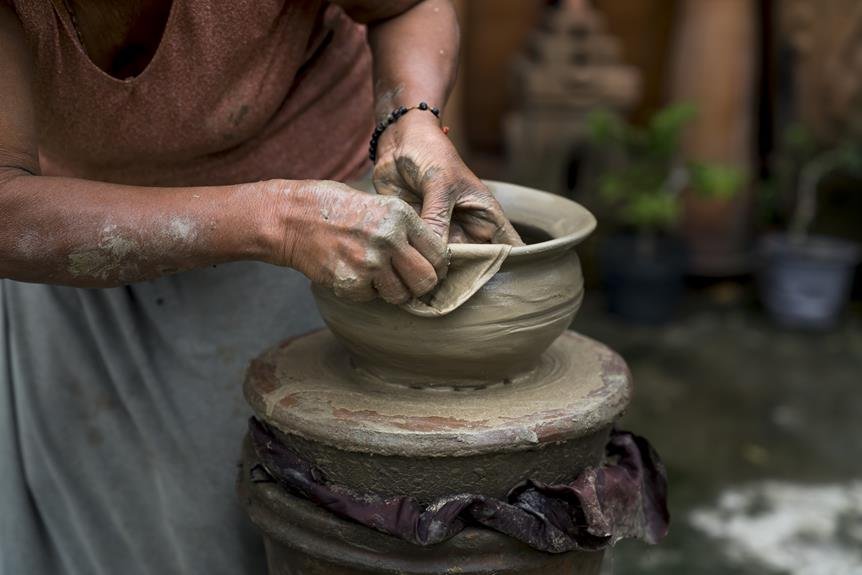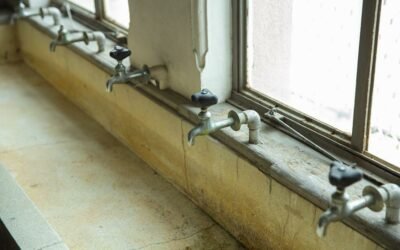If you've recently dealt with mold in your home, you may be wondering if it can come back after remediation. The answer is, unfortunately, yes. Mold can return if the underlying causes are not addressed properly.
In this article, we will delve into the effectiveness of the remediation process, explore the underlying causes of mold growth, and provide practical tips to prevent mold from making a comeback.
Stay vigilant and learn how to keep your home mold-free.
Key Takeaways
- Mold remediation aims to eliminate mold and prevent its return.
- The underlying causes of mold growth are damp and humid conditions, excessive moisture, inadequate airflow, and water intrusion.
- Presence of moisture or humidity issues should be promptly fixed and controlled.
- Ongoing monitoring and maintenance are important to prevent mold from coming back.
Effectiveness of the Remediation Process
You need to ensure the effectiveness of the remediation process to prevent mold from coming back. After all, the goal of mold remediation is to completely eliminate the presence of mold and prevent its return. To achieve this, it's crucial to follow a systematic approach that addresses all aspects of mold removal.
First and foremost, identifying the source of moisture that caused the mold growth is essential. Without addressing the underlying moisture issue, mold is likely to return. Once the source is identified and resolved, the next step is to physically remove the mold-infested materials. This includes thorough cleaning and disinfection to eliminate any remaining spores.
The effectiveness of the remediation process also depends on the proper use of personal protective equipment (PPE) and containment measures. PPE, such as gloves, masks, and protective clothing, should be worn by individuals involved in the remediation process to prevent exposure to mold spores. Containment measures, such as sealing off affected areas and using negative air pressure, help prevent cross-contamination and limit the spread of mold spores to other areas of the building.
Additionally, it's essential to conduct a post-remediation verification to ensure the effectiveness of the remediation process. This involves inspecting the treated areas for any signs of mold growth and conducting air and surface sampling to confirm that the mold has been successfully removed.
Underlying Causes of Mold Growth
Identifying the underlying causes of mold growth is crucial to prevent its recurrence after the remediation process. By understanding what factors contribute to the growth of mold, you can take proactive measures to address these issues and ensure a mold-free environment.
Here are three common underlying causes of mold growth:
- Moisture: Mold thrives in damp and humid conditions. Excessive moisture from leaks, condensation, or high humidity levels provides the perfect breeding ground for mold. To prevent mold growth, it's important to identify and fix any sources of moisture in your home or building.
- Poor ventilation: Inadequate airflow and ventilation can create stagnant, humid environments that encourage mold growth. Proper ventilation helps to remove excess moisture and prevent the buildup of damp air. Ensure that your property is well-ventilated, especially in areas prone to moisture, such as bathrooms, basements, and kitchens.
- Water damage: Any form of water intrusion, such as flooding or leaks, can lead to mold growth if not properly addressed. It's crucial to promptly repair any water damage and thoroughly dry affected areas. Additionally, addressing the source of the water intrusion is essential to prevent future mold growth.
Presence of Moisture or Humidity Issues
To prevent the recurrence of mold after remediation, it's important to address the presence of moisture or humidity issues. Mold requires moisture to grow and thrive, so controlling the moisture levels in your environment is crucial in preventing its return.
One common cause of moisture or humidity issues is water leaks. Leaky pipes, roofs, or windows can introduce unwanted moisture into your home or building, creating the perfect conditions for mold growth. It's essential to fix any leaks promptly and ensure proper insulation and waterproofing to prevent future water intrusion.
In addition to leaks, high indoor humidity levels can also contribute to mold growth. Humidity above 60% can create a favorable environment for mold spores to multiply and colonize. To combat high humidity, consider using dehumidifiers in areas prone to moisture, such as basements or bathrooms. Proper ventilation is also vital in preventing the buildup of excess moisture.
Regular monitoring of moisture levels is crucial to detect any potential issues early on. Use moisture meters or hygrometers to measure humidity levels and identify areas that may require attention. If moisture problems persist, consult with a professional to identify and address the underlying causes.
Practical Tips to Prevent Mold Return
To prevent mold from returning after remediation, it's important to implement practical tips for maintaining a mold-free environment. Follow these three key steps to keep mold at bay:
- Control moisture levels:
- Mold thrives in damp and humid environments, so it's crucial to keep moisture levels in check.
- Use dehumidifiers to maintain humidity below 50%.
- Fix any plumbing leaks or water damage promptly, ensuring that affected areas are thoroughly dried and repaired.
- Proper ventilation in bathrooms and kitchens can also help reduce moisture buildup.
- Regular cleaning and maintenance:
- Regularly clean and inspect your property to prevent mold growth.
- Pay special attention to areas prone to moisture, such as bathrooms, basements, and crawl spaces.
- Use mold-resistant paints and materials in these areas to discourage mold growth.
- Clean and dry any water-damaged items within 24-48 hours to prevent mold colonization.
- Ensure proper airflow:
- Good air circulation helps prevent mold by reducing moisture buildup and promoting drying.
- Keep furniture and belongings away from walls to allow air to circulate freely.
- Use fans or open windows to improve ventilation, especially in areas with high humidity or after activities that generate moisture, such as cooking or showering.
Importance of Ongoing Monitoring and Maintenance
To maintain a mold-free environment, you need to consistently monitor and maintain your property. Ongoing monitoring and maintenance are crucial in preventing the reoccurrence of mold growth. Mold can easily return if the conditions that initially led to its growth are not addressed and controlled. By implementing regular inspections and preventive measures, you can minimize the risk of mold reinfestation.
One effective way to ensure ongoing monitoring and maintenance is by creating a checklist to guide your efforts. This checklist should cover key areas of your property, such as the roof, plumbing, ventilation systems, and areas prone to moisture accumulation. Regularly inspecting these areas and addressing any issues promptly can help prevent mold growth.
To emphasize the importance of ongoing monitoring and maintenance, let's take a look at the following table:
| Area | Monitoring Steps | Maintenance Steps |
|---|---|---|
| Roof | Inspect for leaks or damage | Repair any leaks or damage |
| Plumbing | Check for leaks or pipe condensation | Fix leaks and insulate pipes to prevent condensation |
| Ventilation Systems | Ensure proper airflow and clean filters | Clean or replace filters regularly |
| Moisture-prone areas | Monitor humidity levels and moisture buildup | Address sources of moisture and improve ventilation |
| Crawl spaces | Inspect for signs of moisture or mold growth | Encapsulate and insulate to prevent moisture buildup |
Regularly following these monitoring and maintenance steps will help you maintain a mold-free environment and minimize the risk of mold recurrence. Remember, prevention is key when it comes to mold control.
Conclusion
In conclusion, mold can potentially come back after remediation if the underlying causes of mold growth aren't addressed. These causes often include the presence of moisture or humidity issues.
To prevent mold from returning, it's important to implement practical tips such as fixing any leaks, improving ventilation, and maintaining proper humidity levels.
Ongoing monitoring and maintenance are crucial in ensuring a mold-free environment.






0 Comments